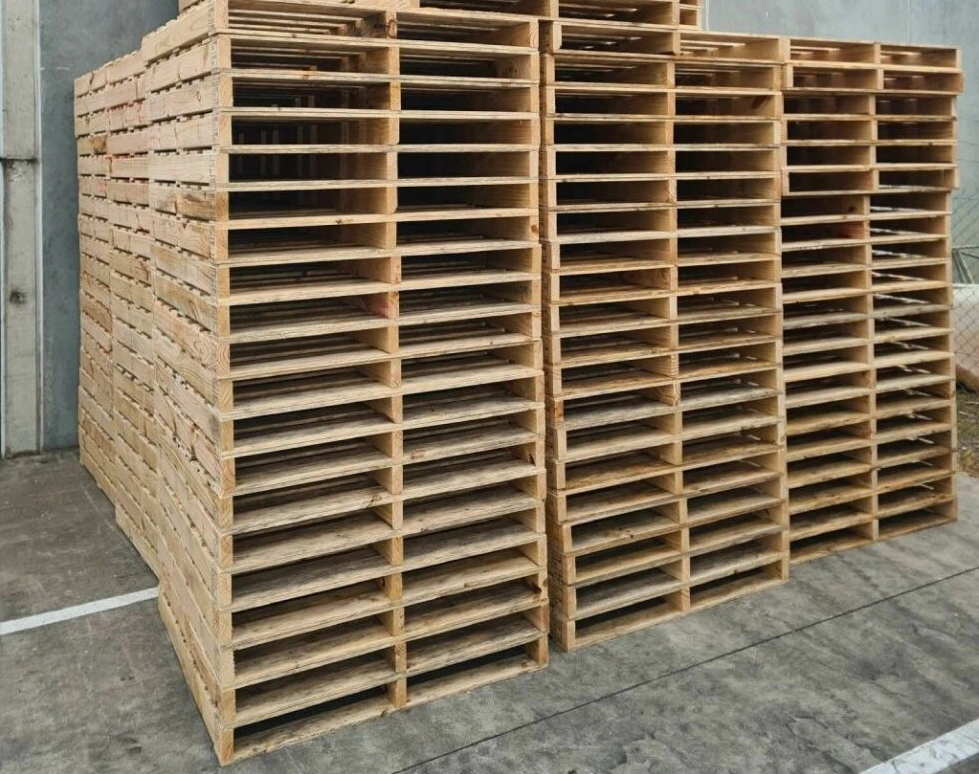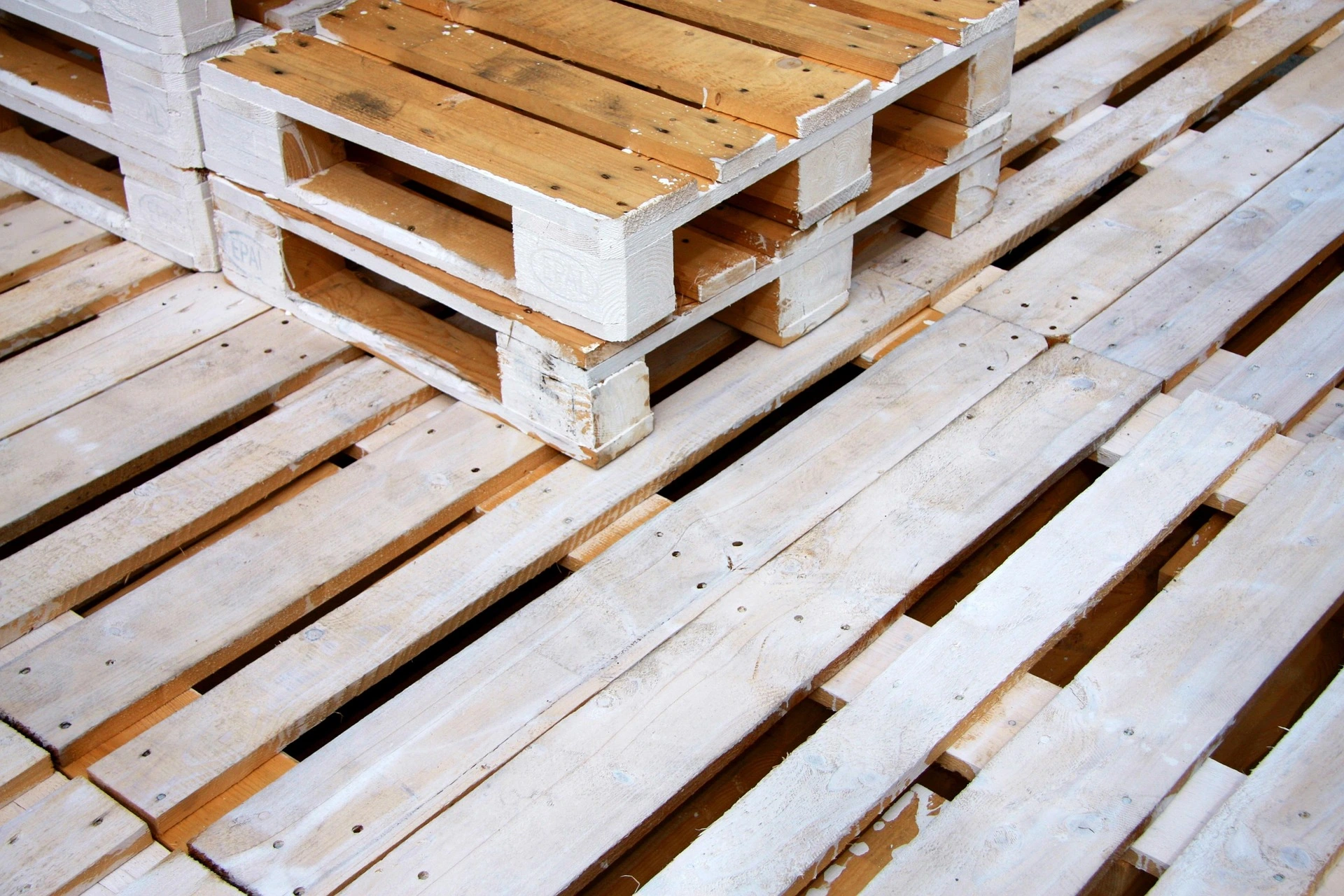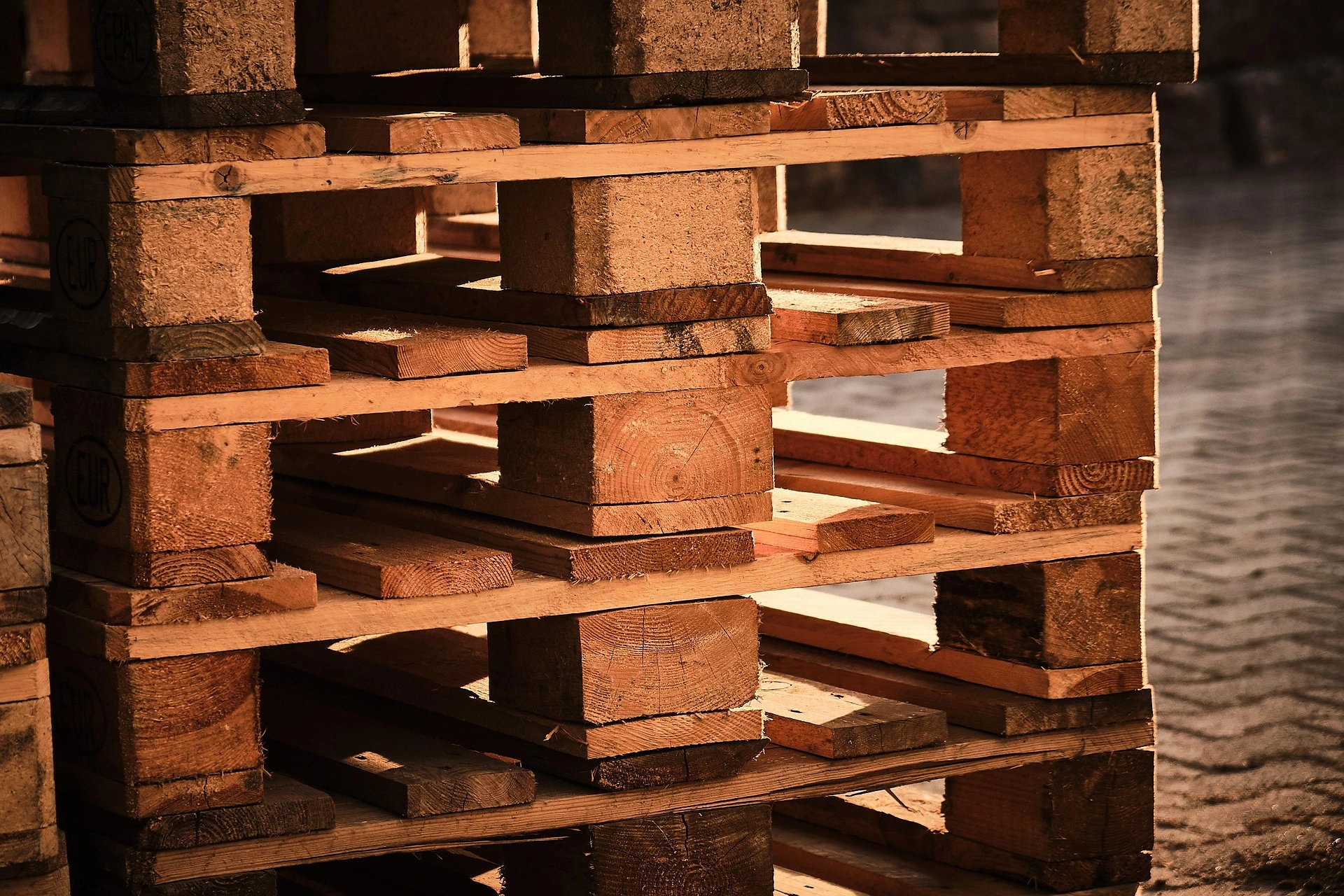At a glance:
- Poor-quality pallets result in hidden costs, including product damage, safety risks, and operational disruptions.
- Damaged goods resulting from unstable pallets can lead to delivery delays, customer returns, and substantial financial losses.
- Unsafe pallets increase the likelihood of workplace injuries.
- Substandard pallets can damage equipment, halt production lines, and result in costly downtime and repairs.
Pallets play a crucial role in modern supply chains by supporting the movement, storage, and protection of goods across factories, warehouses, and distribution networks. While they may seem like a minor component, pallet quality has a direct impact on the operation’s overall cost and safety.
That said, when businesses cut corners by choosing cheaper, low-quality pallets, the hidden costs can be significant.
This article covers everything you need to know about identifying substandard pallets, the risks they pose, and why investing in high-quality pallets is a smart decision.
What Defines a Poor-Quality Pallet?
Poor-quality pallets may look serviceable at first glance, but subtle defects can cause significant operational problems. Below are some common signs of poor-quality pallets:
- Cracked or splintered timber boards are a clear indicator of weakened structural integrity, a common issue in poor-quality pallets.
- Loose or missing nails and fasteners can cause pallets to come apart under load, making them poor quality.
- Low-grade materials, such as unseasoned timber or recycled components that haven’t been treated correctly
- Non-standard dimensions compromise the quality as they lead to issues with forklifts, racking, and automated handling systems.
- Warped or uneven bases that compromise stacking stability and transport safety
The Cost Of Using Poor-Quality Pallets
Purchasing cheaper pallets may seem cost-effective upfront, but the hidden costs quickly add up as they have a lasting impact on your operations, affecting products, personnel, and equipment.
Here are some direct costs of using low-quality pallets on your business:
Damaged Goods
The most significant consequence of using poor-quality pallets is product damage, which can occur during transportation or storage. When pallets are weak, cracked, or poorly constructed, loads can tip, shift, or collapse during handling and transport. This instability often results in damaged goods or contamination.
Beyond the direct replacement costs, damaged goods disrupt delivery schedules, cause missed deadlines, and may even lead to contractual penalties. Additionally, high rates of customer returns and refunds from the compromised goods can erode trust and harm your brand reputation.
In severe cases, such as a pallet collapsing during transit, an entire shipment can become unsellable. This can result in a loss that is far greater than any initial savings through cheaper pallets.
Safety Hazards
Poor-quality pallets pose serious safety risks to everyone involved in the operation. For instance, warehouse staff, forklift drivers, and transport workers are frequently exposed to unstable or damaged pallets on a daily basis. Splintered timber, loose boards, and uneven bases increase the likelihood of accidents such as trips, slips, and falls.
Worse, unstable pallets can cause heavy loads to topple, leading to severe injuries or even fatalities. For example, forklift instability due to broken or non-standard pallets can pose a risk to the safety of both the operator and the handler.
Legal and Insurance Implications
Businesses face serious legal and financial repercussions when injuries or accidents occur due to the use of poor-quality pallets. Workplace injury claims can result in substantial compensation payouts and time-consuming investigations. Furthermore, repeated incidents often result in higher insurance premiums, directly impacting operational budgets.
Moreover, Australian Work Health and Safety (WHS) regulations impose strict compliance standards. Failing to meet these requirements can result in fines, penalties, or even prosecution. In severe cases, businesses may face lawsuits from employees, partners, or customers who have been affected by unsafe practices.
With that said, negative publicity from such events can permanently damage a company’s reputation and relationships with key stakeholders.
Equipment Damage
Substandard pallets can also cause significant damage to handling equipment and infrastructure. Broken or splintered slats often catch on forklift tines, causing mechanical damage and operational delays. Loose nails, debris, or misaligned boards can jam conveyor belts, palletisers, and other automated systems, halting production lines.
Over time, uneven or weak pallets may compromise racking systems, creating additional safety risks and expensive repairs. These equipment issues not only increase maintenance costs but also result in lost productivity due to downtime.
Considering the high value of warehouse machinery, even minor damage caused by low-quality pallets can lead to substantial financial setbacks and reduced operational efficiency.
Comparing Costs of Poor-Quality vs. High-Quality Pallets
The table below highlights how cheap pallets may seem cost-effective initially, but lead to frequent replacements, damaged goods, and higher hidden costs over time.
| Basis | Poor-Quality Pallets | High-Quality Pallets |
| Upfront Cost | Low initial price, looks cost-effective in the short term | Slightly higher investment built for durability |
| Lifespan | Short lifespan, frequent replacements needed | Long-lasting, reliable under heavy use |
| Safety | High risk of accidents from breakage and instability | Stable, compliant designs minimise safety risks |
| Equipment Impact | Can damage forklifts, conveyors, and racks | Smooth, consistent build protects equipment |
| Hidden Costs | Frequent replacements, damaged goods | Lower overall costs with fewer disruptions |
| Long-Term Value | Ongoing costs outweigh initial savings | Strong ROI and operational reliability |
How to Avoid the Risks of Poor-Quality Pallets
Investing in high-quality pallets is essential to prevent unnecessary costs and risks for businesses. Here’s how you can ensure that you are choosing the right pallets:
- Partner with pallet manufacturers who meet Australian standards and provide documented quality checks. Reliable suppliers like Waterstone Pallets ensure each unit is built for durability and compliance.
- Train your warehouse team to inspect pallets before each use. Look for cracks, splinters, loose nails, and any other signs of wear and tear. This proactive step helps catch issues before they cause accidents or losses.
- If your products or operations have specialised requirements, custom-built pallets can improve handling efficiency and reduce risk. Tailored dimensions and reinforced designs ensure safe storage and transport.
- Proper training on handling is also essential. Teams should understand correct pallet stacking techniques, safe handling practices, and how to identify defects early.
The bottom line is that substandard pallets may seem like a budget-friendly choice, but the true cost lies in damaged goods, safety incidents, equipment breakdowns, and compliance risks. Quality pallets enhance day-to-day efficiency and deliver long-term savings and a stronger ROI through their durability and reliability.
If you are looking for high-quality pallets, partner with a reliable pallet supplier like Waterstone Pallets. Contact us today for custom-built, compliant pallet solutions tailored to your operational needs.
FAQs
Can custom pallets help reduce overall costs?
Yes. Custom pallets are designed to fit your products and handling systems perfectly, which reduces product movement, minimises damage, and improves transport efficiency. Over time, this lowers replacement costs, labour expenses, and operational disruptions, resulting in better long-term ROI compared to generic, one-size-fits-all pallets.
What are the most common pallet sizes used in Australia?
In Australia, the standard pallet size is 1165mm x 1165mm, which is widely used across industries and compatible with most racking and handling systems. Other common sizes include 1200mm x 800mm and 1100mm x 1100mm, depending on the sector and specific operational requirements.
How do pallet materials affect performance and durability?
Timber pallets are cost-effective, easy to repair, and ideal for heavy loads. Plastic pallets are durable, lightweight, and hygienic, making them ideal for industries such as food and pharmaceuticals. Metal pallets provide superior strength and are used for specialised, high-weight operations. The right choice depends on your industry needs, load type, and compliance requirements.
Are there regulations for pallet safety in Australia?
Yes. Pallets used in Australian warehouses and supply chains must comply with Work Health and Safety (WHS) standards. Compliance includes proper design, safe stacking, load limits, and regular inspections. Working with a trusted supplier like Waterstone Pallets ensures your pallets meet Australian safety and quality standards, reducing liability and operational risk.



